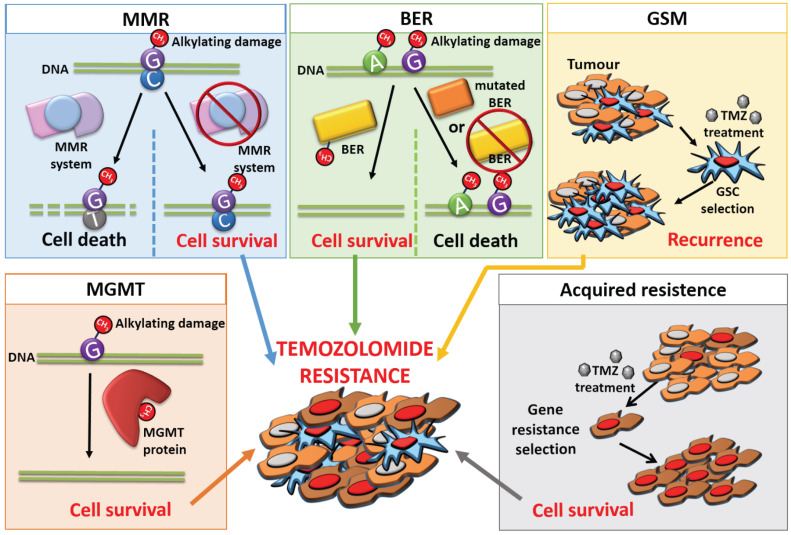Fig. (3).
Diagram of the mechanisms of resistance to Temozolamide present in Glioblastoma. The MMR system induces the cell to apoptosis by initiating a futile repair process that results in DNA strand breaks. When MMR is inactive, these errors are not corrected and the cell survives, giving rise to drug resistance. The BER system works by repairing the errors caused in the DNA, resulting in treatment resistance. However, some enzymes of the BER system can present mutations even be absent, which leads to increased TMZ sensitivity and cell death. Glioblastoma CSCs can survive the treatment, leading to tumor recurrence. The expression of the MGMT protein counteracts TMZ-induced DNA damage, thus its presence is directly related to drug resistance. Finally, TMZ itself can make tumor cells resistant as this treatment may cause a selection of genes that confer a survival advantage. (A higher resolution / colour version of this figure is available in the electronic copy of the article).

